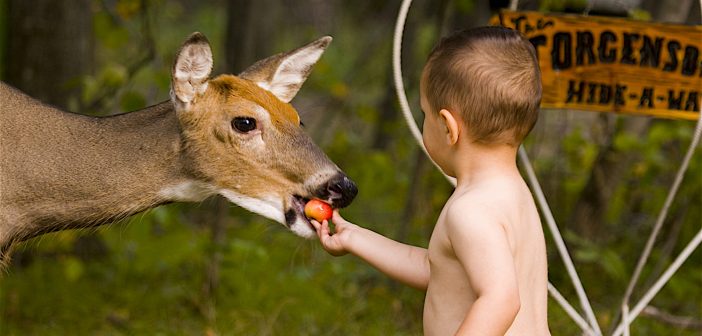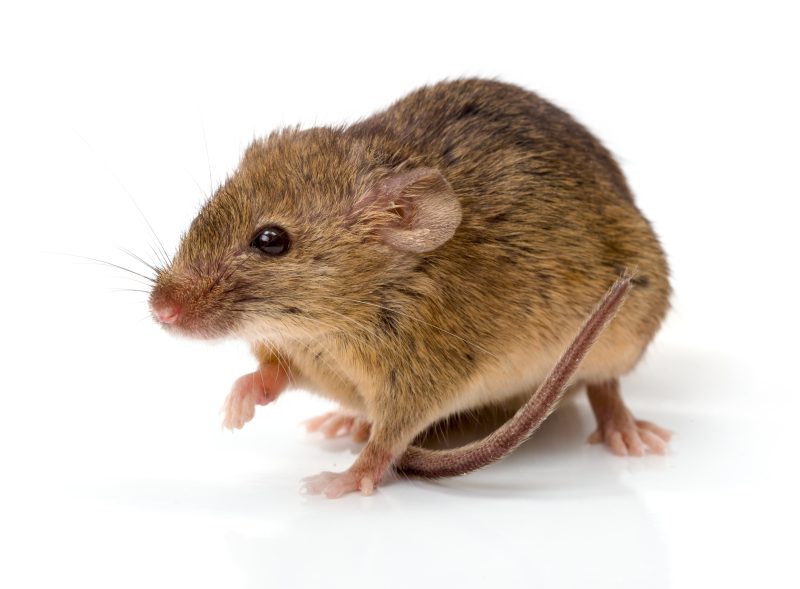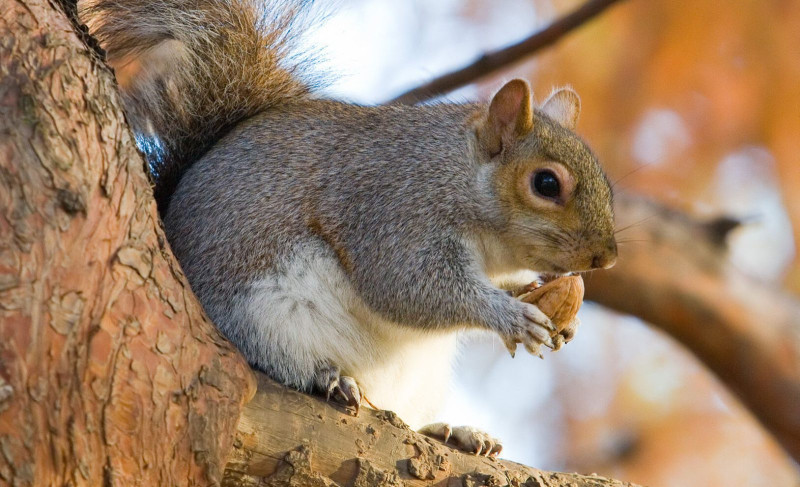Are deer dangerous?
Deer aren’t typically aggressive towards humans and will usually flee when approached. However, it’s important to be cautious and maintain a safe distance, especially during their mating season or if encountering an injured or distressed one. It’s best to admire them from a distance and avoid approaching or attempting to feed them unless they’re tame. While rare, deer can carry transmissible Lyme disease, which they get from Deer Ticks.
How to keep deer from eating plants
Here’s a formula The National Audubon Society says is effective at keeping deer away. Use it sparingly, as the odor is offensive—which is the point. Keep it out of your eyes and wash your hands after handling.
Deterrent recipe
1 – 2 quarts (0.95 l) water
3 whole eggs, raw
1 large garlic clove
2 tablespoons (29.6 ml) chili powder or hot pepper sauce
1 teaspoon (4.9 ml) shavings of deodorant soap
Liquefy ingredients in a blender and mix with the water. Strain it into a plant sprayer. Spray on plants every two weeks and after rainfall. Keep the remainder tightly enclosed in a jar between uses.
Deer Ticks
Deer Ticks, Ixodes scapularis, also called Black-legged Ticks, are found in the eastern half of the United States. They commonly feed on White-tailed Deer, which is how they got their name. But they also prey on rodents, birds, and other animals. They wait on foliage for an animal to brush past and then attach themselves to it. The ticks are dangerous because they can carry Lyme Disease.
Several things can be done to reduce your exposure, but spraying insecticide in your wildlife habitat isn’t one of them—what kills ticks will kill beneficial insects, too.
Clear paths through your habitat, wide enough for you to follow without brushing against foliage.- When gardening, wear light-colored clothing, tuck in your shirt, and tuck your pant legs into your socks.
- Spray repellent on your skin and clothes. The most effective repellents contain DEET, which is toxic to insects; be sure to wash the spray off your skin as soon as possible.
How to rescue an orphaned fawn
You may never see a fawn lying among tree debris on a forest floor or tucked in a stand of tall grasses. The fawns of most deer species have a spotted coat. This helps to camouflage them as long as they stay totally motionless, which they instinctively do. Fawns have no scent at all for the first few days of their lives, another way nature protects them. Even nearby predators can easily overlook them. If you, however, should spot one, help it stay safe by leaving it alone. Deer mothers stay away from their fawns most of the day so as not to attract predators to them.
Don’t approach a fawn unless you’re certain it’s an orphan. Contact a licensed wildlife rehabilitator for instructions. If it’s in imminent danger, approach only if it’s just a few days old—at this age, it’ll freeze when it first sees you, which will give you a chance to catch it. Beyond that, don’t approach unless it’s ill, injured, or weak, as it’ll be too fast to catch. Forcing it to flee may thrust it into the arms of danger.
A fawn can be suspended in a blanket, towel, or even a jacket and carried that way. Then, take the animal to a licensed wildlife rehabilitator.
Do female deer grow antlers?
Female deer, with the exception of reindeer (also known as caribou), generally don’t grow antlers. Antlers are primarily a characteristic of male deer, although there are rare cases of females growing them, particularly in populations with high testosterone levels or hormonal imbalances.
The primary reason female deer typically don’t have antlers is related to reproductive biology. Antlers are used primarily for competing with other males during the mating season, to establish dominance and access to mates. Since females don’t engage in this type of competition, they haven’t evolved to grow antlers.
Do deer shed their antlers every year?
Yes. All male deer drop their antlers in the late fall and begin growing them again in the spring. An exception is Reindeer, where both sexes have antlers. While the males drop them in the fall, the females don’t drop theirs until after their calves are born in the spring.
How to keep deer out of the yard
Well, it can be challenging to keep deer out of your yard, but there are several strategies you can try:
- Fencing: Installing a tall fence (at least 8 feet high) can be an effective way to keep deer out of your yard. Ensure the fence is sturdy and has no large gaps for deer to squeeze through.
- Repellents: Commercially available repellents can be sprayed on plants to deter deer. These repellents often contain strong-smelling or bitter-tasting ingredients that deer find unpleasant.
- Scare Tactics: Scare tactics such as motion-activated lights, sprinklers, or noise-making devices can startle deer and may help keep them away. Sometimes, hanging CDs or aluminum foil strips also help.
- Plant Selection: Strong-scented plants and those with prickly textures or toxic properties can deter deer. Some examples include lavender, yarrow, Russian sage, and ornamental grasses.
- Deer-resistant Plants: No plant is completely deer-proof, but there are many they don’t like very much. Daffodils, catnip, and mint are a few examples. Plant them around the perimeter of your yard or garden. Check with your local nursery for recommendations.
- Netting or Covers: Use netting or covers to protect vulnerable plants, especially when deer are most active, such as the growing season or winter when food is scarce.
- Change Landscaping Layout: Consider redesigning your landscaping to make it less appealing to deer. This may involve removing plants that are particularly attractive to deer or creating barriers with rocks or other obstacles.
- Dog Presence: The scent and noise of a dog can make deer hesitate, so if you have a dog, allow it to roam your (fenced) yard.
- Combination Approach: Often, the most effective strategy is to use a combination of tactics. For example, combining fencing with repellents and scare tactics can create multiple barriers to deter deer effectively.
All about White-tailed Deer
How to safely rescue and care for urban wildlife
Helping birds that are in trouble






